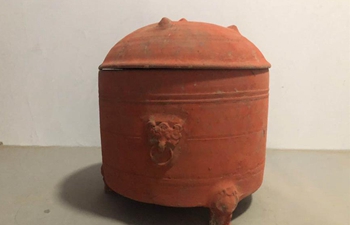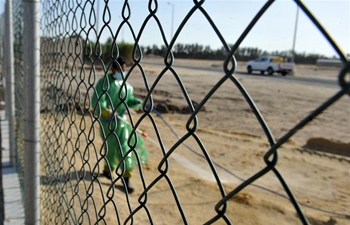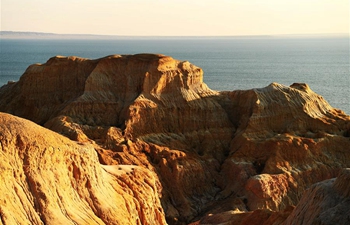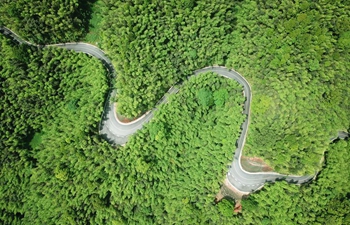BEIJING, May 16 (Xinhua) -- China's Yutu-2, the first rover on the far side of the moon, has found materials from deep inside the moon that could help unravel the mystery of the lunar mantle composition and the formation and evolution of the moon and the earth.
Using data obtained by the visible and near infrared spectrometer installed on Yutu-2, a research team led by Li Chunlai, with the National Astronomical Observatories of China under the Chinese Academy of Sciences, found that the lunar soil in the landing area of the Chang'e-4 probe contains olivine and pyroxene which came from the lunar mantle deep inside the moon.
The first important scientific discovery of the Chang'e-4 probe since it made the first-ever soft landing on the far side of the moon was published online in the latest issue of the academic journal Nature.
The moon comprises a core, mantle and crust, like the earth. With the evolution of lunar magma, the light plagioclase rose to the upper layer to form the lunar crust, while the heavier olivine and pyroxene sank to form the lunar mantle, Li said.
"But since the lunar crust is very thick, and there has been no volcanic activity and plate movement on the moon for billions of years, it's hard to find materials from the lunar mantle on the surface," Li said.
The composition of the lunar mantle has long been the subject of theory. Neither the lunar samples from missions by the United States and Soviet Union, nor the remote sensing probes orbiting the moon have provided direct evidence of the accurate composition of the lunar mantle.
Chinese scientists focused on a special area on the far side of the moon -- the South Pole-Aitken (SPA) Basin, which was formed by a celestial collision over 4 billion years ago. With a diameter of 2,500 km and a depth of about 13 km, the basin is the oldest and largest impact crater on the moon.
After Chang'e-4 successfully landed on the Von Karman Crater in SPA Basin on Jan. 3 this year, the Yutu-2 rover obtained good quality spectral data at two sites.
"The data, unlike that obtained by Yutu on the near side of the moon, gave us a pleasant surprise," said Li.
Analysis showed the lunar soil in the landing area contains a large amount of olivine, low-calcium pyroxene and a small amount of high-calcium pyroxene, which are very likely from the lunar mantle, Li said.

















